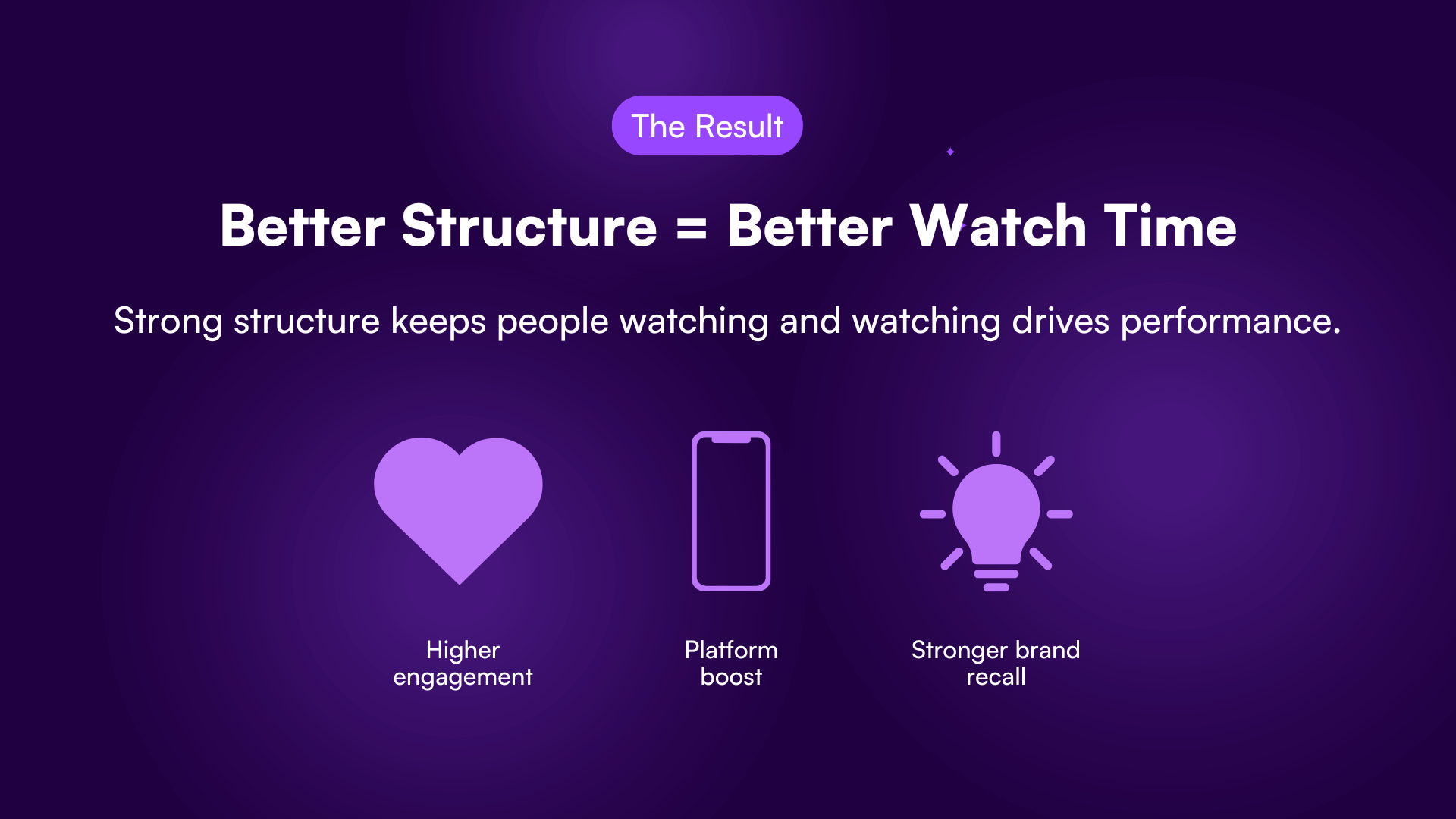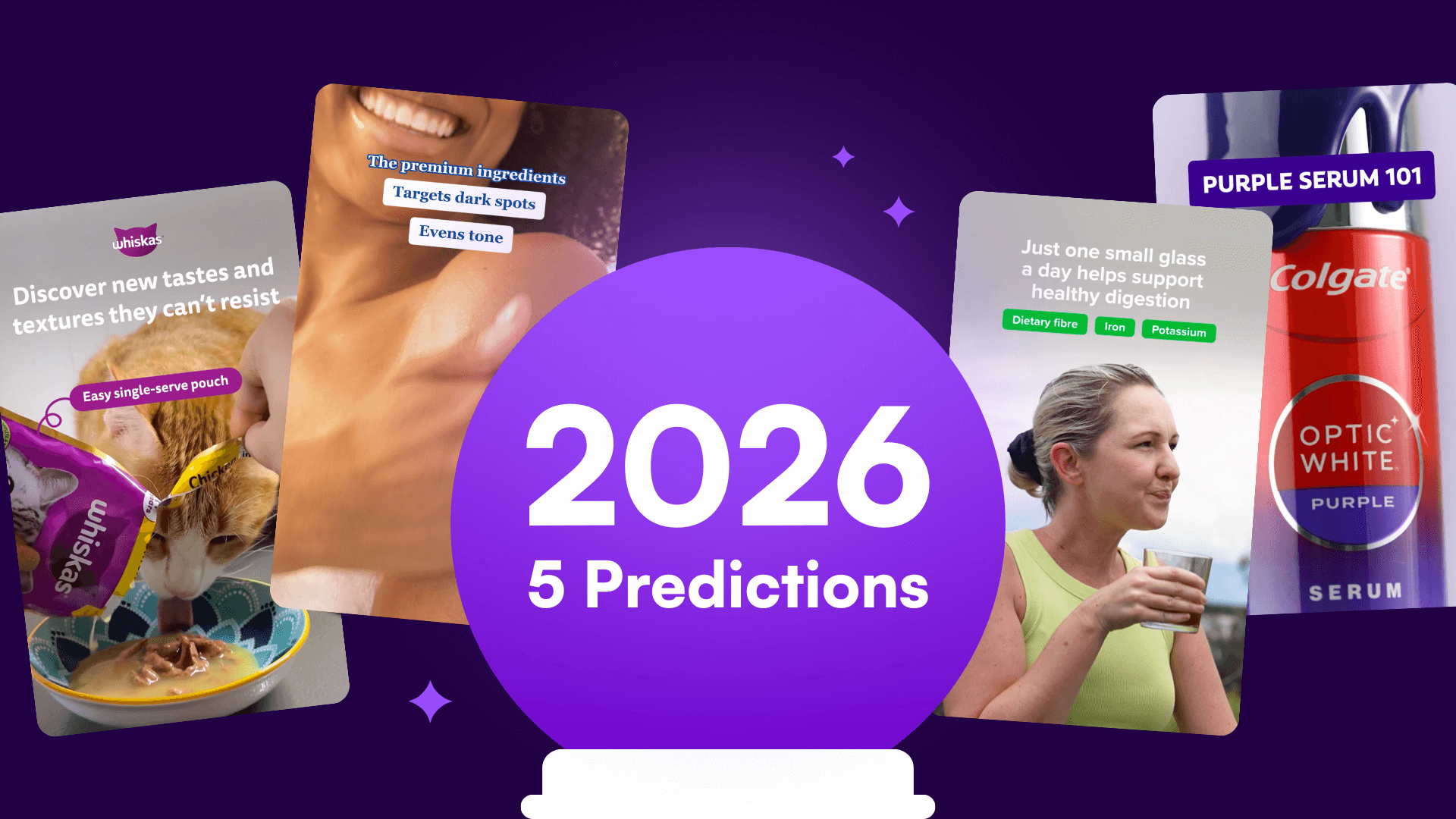Why most social ads fail—and how to fix it in the first 3 seconds
%20(1).png)
I've seen it happen over and over—brands pouring millions into social ads, only for them to be ignored or skipped before the message even lands. The reason? They aren’t structured for how people actually consume content on social.
If an ad isn’t built to hold attention from the very first second, it doesn’t matter how good the visuals are, how strong the message is, or how compelling the creator might be.
Without the right structure, the ad won’t get the chance to work.
If people don’t watch, they won’t engage. And if they don’t engage, there’s no chance they’ll convert. It’s that simple. Yet, most brands are still structuring their ads in ways that fail to keep people watching.
I've analysed thousands of social ads, and one thing is crystal clear—the first 3 seconds make or break your ad. If you don’t grab attention immediately, they’re gone. Yet many social ads bury the best part too deep, forcing viewers to wait through slow setups, generic intros, or problem-heavy storytelling before getting to the payoff.
The result? Low watch times, poor engagement, and ads that never get the chance to work.
Why most social ads fail—and what needs to change
Every time I review underperforming social ads, I notice the same patterns. The creative might look great, but the structure is all wrong. Audiences are tuning out before the ad even has a chance to work.
I’ve heard it all—marketers blaming poor performance on targeting, budget, or platform choice. But in many cases, the real issue is the ad’s structure.
Here’s where most go wrong:
1. Leading with the brand instead of the outcome
Too many ads open with a logo, tagline, or generic brand statement before giving the viewer a reason to care. But on social, nobody is waiting to be sold to—they’re waiting to be entertained, inspired, or intrigued.
2. Taking too long to get to the point
I get why so many brands still structure ads this way. Traditional marketing drilled into us that we need to set the stage, build tension, and then deliver the payoff. But that structure wasn’t built for social feeds.
On platforms like TikTok and Instagram, people decide in seconds whether an ad is worth watching. If the payoff comes too late, they’re gone before they ever reach it.
3. Focusing too much on the problem
Classic ad frameworks like PAS (Problem, Agitate, Solution) start by highlighting a pain point. While this can work in longer formats, it often backfires on social.
Why? Because negativity isn’t a hook—it’s a turnoff. Leading with problems makes people disengage before they ever see the solution.
%20(1).png)
Why structure is the foundation for better watch time
Winning on social isn’t just about making good creative—it’s about making ads that people actually watch. And the only way to improve watch time consistently is by structuring your ad for the way people actually scroll.
A strong structure guides the viewer through the content in a way that keeps them engaged. It doesn’t just rely on attention-grabbing visuals—it ensures that the core message is delivered efficiently before the audience moves on.
Marketers often measure success by CTR, conversions, or engagement. But none of that happens if people don’t watch the ad in the first place.
Longer watch times lead to:
- Higher engagement – People who watch longer are more likely to interact.
- Better algorithmic favourability – Platforms boost content that keeps users on-screen.
- Stronger brand recall – The longer someone stays, the more they retain your message.
Ads with a stronger structure aren’t just more effective—they’re easier to scale.
When your creative is designed for watch time, it becomes easier to personalize for different audience segments, optimize across multiple markets, and produce high-performing variations—without starting from scratch every time.
But here’s where it gets even more valuable: watch time data tells you exactly what needs improving.
By analyzing where viewers drop off, you can pinpoint the weak spots in your ad. Are people leaving in the first few seconds? Your hook isn’t strong enough. Do they drop off right before the CTA? Maybe the transition needs to be clearer. When you use the same structure consistently and measure watch time, you get actionable insights to refine and optimise your creative.

Social ads need their own framework to succeed
The way people consume content on social has changed, but most brands haven’t caught up. They’re still using ad structures built for a different time—ones that make people wait instead of making them want to stay.
And that’s why even great creative can fail. Watch time isn’t just about making ads more interesting—it’s about structuring them so the audience stays engaged.
So, how do you actually structure a high-retention social ad? That’s exactly what I break down in the next article—where I’ll share the tested four-frame structure that makes it easier to hook, engage, and convert.









%20(1).png)
%20(1).png)






